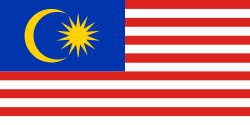LNG Plant Safety
Tickets
LNG Plant Safety
LNG Plant Safety

What are the Goals?
This course covers the advanced aspects; of LNG Plant [Safety] operations and the practical and commercial considerations in Liquid and Gas Operations. This includes LNG operations; LNG Product Quality Assurance; LNG Ship to Facility safety; LNG Terminal interface operations; LNG tanker loading and LNG discharge safety procedures.
Who is this Training Course for?
All personnel responsible for:
- LNG plant, terminal and marine safety
- LNG loading
- Discharging and custody transfer
- Handling LNG cargoes
- LNG plant operators
- LNG handlers
- LNG vessel owners and operators
- LNG plant safety auditors
- Surveyors and inspectors
- LNG marine superintendents
Daily Agenda
Day One: ISGOTT/MTCOT/SAFETY – LNG
- Assessment of delegates current LNG knowledge and understanding LNG Plant and Terminals
- Specific LNG safety criteria and areas that need in depth coverage after assessment of delegates knowledge base
- Asking general questions related to LNG duties, this allows customizing the LNG safety training program to ascertain optimum benefit to the delegates
- International Safety Guide for Oil Tankers and Terminals (ISGOTT) new Edition
- LNG Safety procedures and recommendations for tanker and terminal personnel
- Oil companies International Marine Forum (OCIMF)
- LNG Marine Terminal Competence and Training Guide (MTCOT)
- Critical LNG Load Master – Types of Liquid/Gas carriers and LNG Tanks
- LNG ESD 1 and 2 - Technical comparisons and LNG Containment systems
- Critical LNG – Applicable safety codes and Charterers’ requirements
- International Gas Code
- LNG Plants and Tank Type
- LNG Vessel types
- Safety Management of the LNG Tanker and Terminal/Plant Interface (ISGOTT)
- LNG Communications procedures & precautions
- LNG Pre-berthing exchange of information
- Critical LNG Information transfer from tanker to terminal
- Critical Information from LNG terminal to tanker
- LNG Cargo loads
- LNG Load Master discharge plan
- What is LNG? Specific Safety - Hazards and Risks
- Screening / Compatibility Studies of participating LNG
- LNG Ship compatibility and OPTIMOOR
- Criteria in selecting transfer area and Approval from the authorities for LNG
- LNG Security issues
- LNG Checklists and Preparations
- LNG Risk Assessments and Management, Helicopter operations, Cargo Hazards, weather conditions, Personnel injury, mooring unmooring operations
Day Two: LNG Safety - Custody Transfer, Quality, Preparations for Loading and Unloading
- What is LNG custody Transfer?
- LNG Pre-transfer exchange of information
- MSDS - LNG
- Preparation for LNG cargo loading (responsibilities ship & shore)
- Preparation for LNG cargo discharge (responsibilities ship & shore)
- On board procedures and training
- International Ship and Port Security Code - LNG
- LNG Tanker Management Self-Assessment
- What is it, who is it for?
- Overview of elements and LNG stages
- How the TMSA is used
- LNG - SIRE inspection system
- What is it and why have it for LNG?
- The stages of LNG and Liquid/Gas Cargo Cycles
- LNG Transfer system design and parameters Contributors to Boil off Gas
- Preparation of Cargo Cycle – LNG and Liquid/Gas Terminal Compatibility Studies
- Roles and responsibility of plant/ terminal in LNG cargo transfer
- LNG Terminal loading and discharging
- LNG Ship-to-Shore operations interfaces
- LNG Safety Compatibility forms
- Procedures for Safe Mooring at LNG Plants and terminals- POAC
- LNG Safe Mooring (ISGOTT)
- LNG POAC demands and responsibilities
- LNG Terminal Interface – Load Master/POAC and Master Mariners
- LNG Jetties & SPM
- LNG Vessel Preparation of Mooring
- Loading Master monitoring of moorings
- Duties and Responsibilities of the LNG Loading Master
- Optimoor and LNG
- Berthing and letting go
- Liquid Natural Gas [LNG] - Project LNG/SIMOP/HSE/IMO/ILO
- LG Safety and Planning
- SWP/JSA Delegate Exercise - HSE Health and Safety Workplace Practices SWP/JSA for end to end
- LNG Risk Analysis and Job Safety Analysis
- Technical characteristics of LNG
- LNG Handling, storage and spill risk
- Volatile cargo and gas vapors leak from ruptured tanks, Hoses and pipelines, causing oxygen deficiencies
- Gas Hazard Monitoring Equipment for JSA
- Adverse Weather Working – Guidelines examples for JSA
- LNG Hose construction and length
- Hose quality and identification
- The LNG ‘Golden’ Safety Rules
- Confined space entry
- Process and Mechanical isolations
- Electrical isolation
- Working at Height
- Ground disturbances
- Lifting Operations
- Driving Safety
- Management of Change in Organization, Equipment, Plant, Standards or Procedures that have a Health, Safety, Integrity and/or Environmental impact
- ‘Step back’ 5 x 5 procedures
Day Three: LNG - Technical Liquid Transfer Inspections
- LNG In Service Inspections
- LNG Service Leak Testing
- COLOUR COUPLINGS INDEXES
- Operational risk profiles in LG Bunkering
- Inspections and Audit – Rigging
- Inspections and Audit – Wire Ropes
- Inspections – Handling and Chains
- Inspection - Shackles and hardware
- LNG Plant and Offshore based - Safety Checklist
- LNG Plant and Ship-shore safety checklist
- Identify improved procedures for the handling, loading and discharging of LNG
- Understand pumps and pipeline systems including loading and discharge operations for LNG
- Liquid/Gas Operations – LNG Tanker Loading and Discharging Operations and Preparations
- LNG Arrival preparations and checklists
- LNG Cryogenic Hose safety, testing and type
- Dynamic Positioning
- Jetty Approaches: Finger or Face Terminal Design Interface for LNG discharge
- Delegate Exercise – LNG Safety Operations
- LNG Cargo Safety Transfer checklists and forms required
- LNG Cargo Transfer Safety equipment required
- LG Cargo hazards, safety and risks that exist
- LNG Cargo controls
- Cargo training required for personnel (LNG Preparations forms)
- The LNG Plant/Terminal/Shore Interface/ LNG - STS and Management of Operations
- LNG and Liquid/Gas Transfer System Naval Architectures and available technologies
- LNG Ship to Ship to shore
- LNG Ship to Platform
- LNG Ship to Ship
- LNG Ship connected transfer systems and tandem configurations
- LNG System Uptime considerations of effective operations
- Meteocean conditions, prediction tools
- Organizational Skills Motivation of Operator, Ships’ Officer to cooperate LNG Liquid form measurement - Differential Flow mechanisms, design, metering and performance
- Ultrasonic Flow mechanisms, design, metering and performance
- Vortex Flow mechanisms, design, metering and performance
- Applications of flow meters, calibration, calculations, transfer principles Safety
- Case Study
Emergency Safety Response and Contingency Planning – LNG
- Protocols and how the systems are used
Day Four : Emergency Safety Response and Contingency Planning – LNG
- Things to do in case of an LNG emergency
- General Emergency Response Management
- Things to avoid during LNG emergencies
- Contingency equipment for LNG
- Spill and LNG leaks
- LNG SOPEP/SIMOPS use
- Fire or Structural damage due to LNG spills
- Poor weather and mooring failures
- Precautions against piracy
- Media management and communications, parties involved
Case Studies of Recent LNG industry incidents
LNG - Common causes of these incidents
Required LNG training and preparations
LNG Hazards and Risks moving forward
- Geographical hazards
- Crew factor
- LNG Ship and shore requirements
Preparing for the future incidents – LNG Contingency planning
STS equipment and training
Salvage of an LNG vessel
- Considerations for LNG cargo recovery
- LNG Environmental impact
- LNG Technical equipment development
Risk profiling of your LNG operations
What response is required?
- Safety Management Systems and Options for LNG
Day Five : LNG Technical Developments - LNG Engineers and Tech Superintendents – Wear down, Fatigue and Failure Management Practices and planning - LNG Fuel, STS and Bunkering
- Overview of SMS & PMS
- Working of LNG-driven engines and fuel systems
- Discuss onboard planned maintenance systems – PMS
- Discuss Trend analysis – T.A
- Analysis of Condition monitoring technical - CME
- OEM Main Engine component failures relevant to engine performance
- LNG Plant and the offshore installation interface - OIM
- On and Offshore Installation Manager [OIM] responsibilities
- Safety
- Management practices
- Ship to install procedures
- Communications
- LNG Fire and Causes – Inspection, Audits and Investigation
- The science of LNG
- Chemical and physical properties of highly-flammable fuels
- Classification of fire causes
- Chemical sources, material subject to spontaneous ignition - ships
- Materials, Cargo, Electrical heat energy
- Faulty electric circuits and equipment, replacement parts
- Fuses, exposed lights by the type
- Fixtures, motors and engine rooms leaks in fuel Systems
- Welding in burning operations and other energy sources
- Mechanical energy
- Liquids and gases
- Electrical wiring malfunctions
- LNG Fire Scene - Points of Origin, the Science of Fire
- Fire investigator safety
- Fire scene hazards
- Investigation priorities upon arrival
- Science of smoke and fuel
- Determining the point of origin
- Reconstruction of fire
- Documentation, sketches, sketching systems plotting methods
Tickets
Related Cources
Fixed & Fluidized Bed Reactor Technologies

Fixed & Fluidized Bed Reactor Technologies

Risk-Based Inspection (RBI) for Natural Gas Facilities

Risk-Based Inspection (RBI) for Natural Gas Facilities

Advanced SCADA & Automation in Oilfield Operations

Advanced SCADA & Automation in Oilfield Operations

Formation Water Management & Produced Water Reuse

Formation Water Management & Produced Water Reuse

Pipeline Leak Repair & Emergency Maintenance Strategies

Pipeline Leak Repair & Emergency Maintenance Strategies


